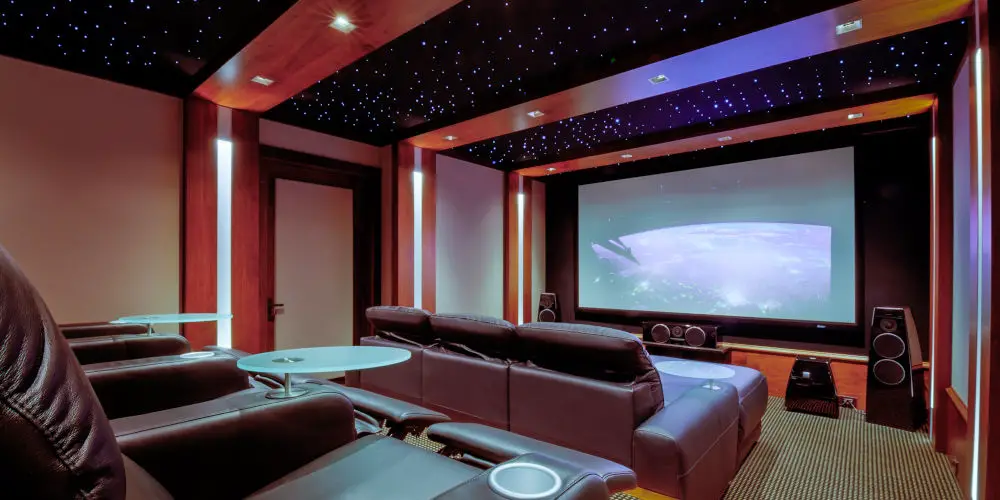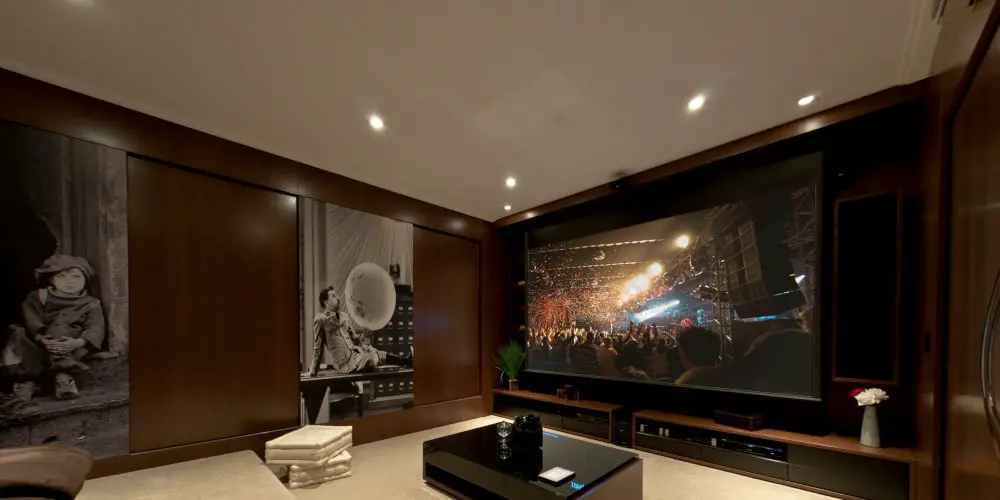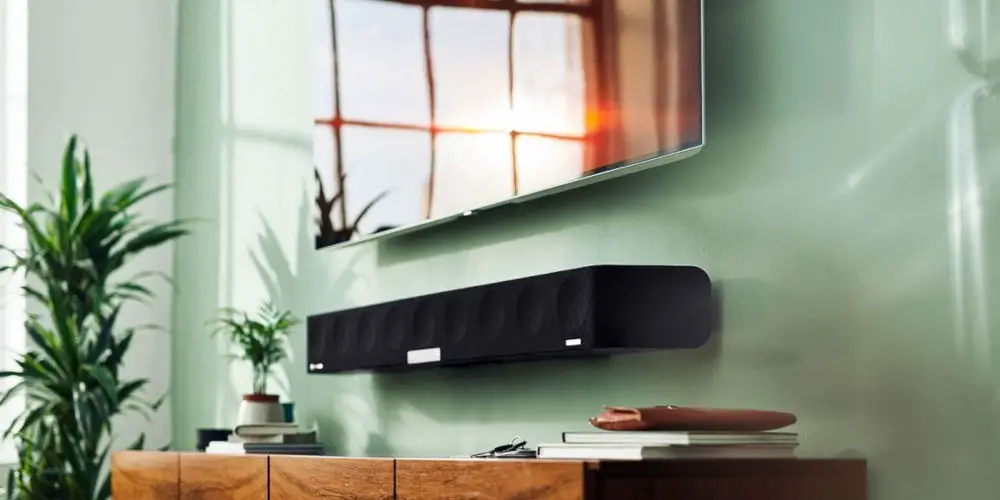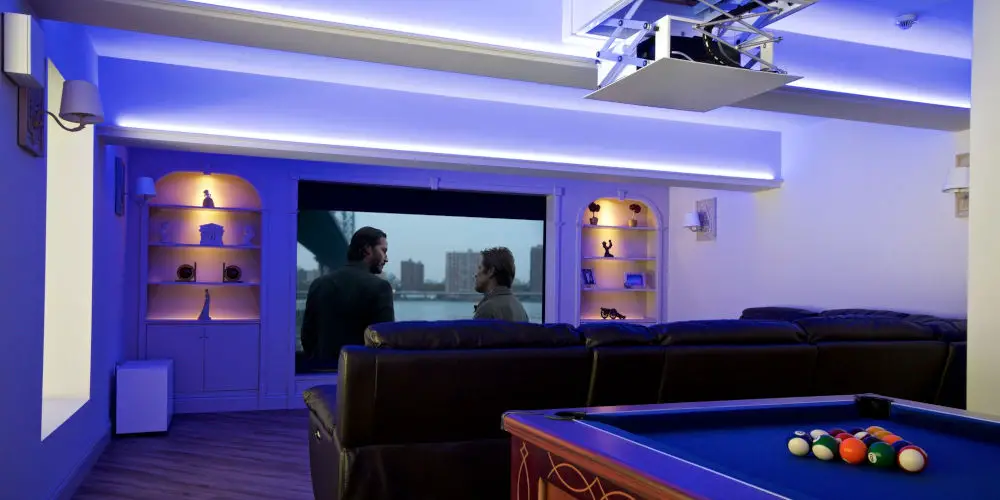How to pick the ideal home cinema speakers

Finding the right home cinema speakers for your room is critical for building a surround sound system that truly brings the movie or game to life.
If you’ve invested in a 4k projector and the best AV receiver, yet plan on using any old speakers, then let me try and convince you to spend some time researching speakers. By matching all of your equipment, you create the best possible experience.
Imagine watching a Bond film, only the sound is immersive that you feel right there in the middle of the action. You’d be completely captivated. Likewise, if you’re watching the Italian job, because who doesn’t enjoy a classic film with an epic car chase!
Choosing home cinema speakers is more than just about picking your favourite electronics brand or the intended position in your speaker set up, it’s about creating an experience that makes you feel as if you were on set, caught up in the action!
What speakers do I need in my home cinema?
If you’re new to the world of home cinemas, you might be confused about just what speakers you need and how many. Thankfully building a surround sound system is straightforward and consists of a few essential parts.
Basic 5.1 set up
In a basic 5.1 surround sound system, you’ll need:
- A 5.1 AV receiver to power your speakers.
- Front left and right speakers that flank your screen or TV. The most popular choices include Bookshelf or floor-standing speakers.
- A centre channel speaker that sits below or above your screen/TV.
- Rear left and right speakers, which are position behind you. Again you can use bookshelf or floor-standing speakers.
- A subwoofer.
7.2 sound surround sound
For even more realistic audio, you’ll want to try a 7.2 surround sound system. You’ll need all the above plus:
- A 7.2 AV receiver (rather than a 5.1)
- Surround speakers which sit on either side of you. These can be Bookshelf or floor-standing speakers.
- Another powered subwoofer (optional).
Professional cinema sound
If you want to replicate a professional cinema set up complete with overhead sound effects then you’ll also need:
- A receiver that offers Dolby Atmos processing.
- Pair of in-ceiling or upward-firing speakers.

Matching your speakers and room
When designing a surround system, the first element you should consider is the room itself. Do you have a large open space that includes a games area? Is your cinema room small and cosy? Are the ceilings high or vaulted? Is the room an odd shape?
If you’re dealing with a small space, then you’ll probably want to use in-wall, in-ceiling or bookshelf speakers as these can be mounted out of the way, creating an unobstructive look.
You’ll want to avoid floor-standing speakers as they will use up too much of your valuable space and make the room feel smaller.
However, in a large space, consider using floor-standing speakers as they will add depth and interest to the room. Plus you’ll have enough space for them without them creating a crowded look. Tower speakers are also ideal for listening to music in stereo.
Also, consider the room’s purpose. If you’re building a dedicated cinema room, then you’ll be able to use floor-standing speakers and won’t have to worry about them getting knocked over.
In a family room, it might be best to use wall-mounted home cinema speakers so they are out of the way of kids and pet!
Finding the sweet spot for your home cinema speakers?
In an odd-shaped room, you might need to add some acoustic treatment to eliminate any weird reflections or standing waves. The same is true if you have a high or vaulted ceiling as you’ll be fighting against the room’s natural reverb.
You’ll also want to spend some time considering where your home cinema speakers will provide the best overall sound. In a cinema, you want to optimism so no matter where you sit, it sounds good rather than two seats having excellent sound with the rest suffering.
It’s worth reading our guide to home cinema speaker placements as this offers a range of advice and tips to getting your speaker correctly positioned.

What role does each speaker play in a home cinema?
We’ve already covered the different basic speaker arrangements for 5.1, 7.2 and Dolby Atmos, but you might wonder what role each of our home cinema speakers plays. By understanding what each does, you can make a more informed decision when buying your home cinema speakers.
Front left and right speakers
These are the easiest to understand and so are a good starting point. The front left and right speakers reproduce the movie’s musical score and sit on either side of the screen or TV. Think of them as a kind of basic Hi-Fi system. They also handle the majority of the special effects.
If you listen carefully, you hear slightly different sound and textures from each of these speakers. You might even hear sounds move from the left speaker to the right in sync with the action.
By effectively placing different sounds across the speakers or moving elements from one to the other, the audio designer creates a wide soundscape and adds interest to the movie while ensuring it sounds realistic.
You could use floor-standing speakers, bookshelf speakers or in-wall speakers for your front left and right speakers.
Centre channel
If you’re building your first home cinema, you might wonder what the speaker below (or in some cases, above) the screen does. Known as the centre channel, this speaker is considered the most important one in your system.
Why? It delivers over 50% of the movie’s soundtrack, including almost all of the dialogue. In addition, it provides the centre stage sound effects.
As such a critical speaker, it’s worth spending a little longer when selecting the ideal one to ensure you pick one that will deliver crystal clear audio while matching your room and the other speakers in your cinema set up.
If you’re using compact speakers, then you can get away with a smaller centre channel speaker. However, you’ll need something larger if you’re using floor-standing speakers to ensure the volume is balanced and the centre doesn’t get overpowered.
You can position the centre channel speaker either above or more commonly, below the screen or TV. So it’s worth experimenting to see which position sound the best to your ears.
Surround speakers
Depending on your AV receiver, you’ll either have 2 or 4 surround speakers. With a 5.1 receiver, you’ll have two and they’ll be positioned behind you and mirror the front left and right.
Whereas with a 7.2 AV receiver, you’ll have four. There will be a pair behind you, just like before, and a pair on either side of you in the middle of the room.
These surround speakers reproduce ambient sounds such as raindrop or rustling leaves, creating a completely immersive sound experience. They also work with the other speakers to deliver sensational direction effects such as a train rushing by or bullets flying past you.
You don’t need specialist speakers for your surrounds as the majority of bookshelf speakers or on-wall speakers are suitable. Your surrounds can go on speaker stands or can be mounted to the wall.
However, you might also consider specialized bipole/dipole surround speakers, which have multiple drivers that fire in different directions. They create a diffused sound field that enhances the wraparound effect.
Subwoofer: All about that bass!
There’s one final element to add to our 5.1 or 7.2 surround sound system; A subwoofer. Music doesn’t sound the same without a deep bass sound throbbing! So you’ll want to add the best powered subwoofer to complete the sound field.
When watching a movie, the subwoofer gives planes flying overhead and bombs exploding their window-rattling punch.
As bass frequencies act differently and aren’t so directional, you can place your subwoofer in a variety of location. For most, they place the sub at the front of the room, usually to the left or right. That said you could locate it under the screen.
Like with the other speakers, when buying a subwoofer that matches your room’s style and your other speakers. As a rule of thumb, the larger the driver, the deeper the bass. So don’t be afraid to buy a 12-inch sub!
Dolby Atmos and DTS:X overhead effects speakers
If you aim to create a professional cinema room albeit at home, then you’ll want to invest in a 5.1 or 7.2 AV receiver that supports either Dolby Atmos or DTS:X. To enjoy a more expansive sound field delivered by Dolby Atmos, you’ll need an additional pair or two of speakers.
These would typically be ceiling speakers that are placed above your listening position. However, you could use upfiring Atmos speakers on top of the front and rear pairs of speakers. These work by firing sounds toward the ceiling and then bounce back down to the listening position.
A Dolby Atmos system uses these additional home cinema speakers for overhead effects that rain down from above. Whereas DTS:X use software to mimic these additional speakers.

Should I use the same brand for all of my home cinema speakers?
Each speaker brand has its unique tonal qualities or “voice”. Even different series from the same manufacturer will have a unique, individual voice.
So it’s worth using the same brand of speakers for each location as doing so will ensure you listen to an evenly balanced sound and output levels within your room.
If using a single brand and series for all of your speakers is impossible then try to at least use the same brand of speakers for front left, right, and centre locations. Doing this allows you to create a unified front soundstage, ensuring consistent performance.
Getting started with speakers
For the best result, you’ll need to pair your new home cinema speakers with a quality AV receiver. If you haven’t purchased one then start with our AV receiver buying guide.
Don’t forget to match your speakers and amp to ensure you don’t blow either element. You’ll need to use a decent speaker wire and a subwoofer cable to connect your system together.
Finally, you should invest in good power protection for your receiver, TV, A/V components, and powered sub ensuring they last.




